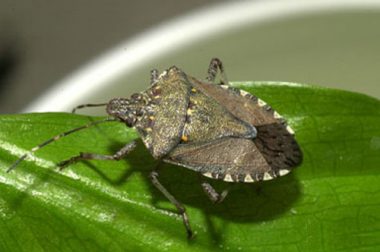
Christelle Guédot, UW-Madison Entomology and Bryan Jensen, UW IPM Program
Revised: 3/26/2014
Item number: XHT1236
Brown marmorated stink bug (BMSB), Halymorpha halys, is an exotic, invasive insect native to Asia, including China, Japan, Korea and Taiwan. BMSB was first confirmed in the United States in 2001 although an unconfirmed sighting was reported in Pennsylvania in 1996. As of 2014, reproducing populations of BSMB have been reported in California, Connecticut, Delaware, Florida, Indiana, Kentucky, Maine, Maryland, Massachusetts, Mississippi, Missouri, New Hampshire, New Jersey, New York, North Carolina, Ohio, Oregon, Rhode Island, South Carolina, Tennessee, Virginia, Washington D.C. and West Virginia. BMSB has also been found in Alabama, Arizona, Georgia, Illinois, Iowa, Michigan, Minnesota, Nebraska, Washington and Wisconsin. BMSB was first detected in Wisconsin in 2010 and its presence has subsequently been confirmed in Brown, Dane, Jefferson, Kenosha, Manitowoc, Racine and Waukesha Counties, with unconfirmed reports in Ozaukee, Polk and Rock Counties. To date, no BMSB eggs have been documented in Wisconsin. However, one immature BMSB (nymph) was found in Dane County in October 2012, suggesting that there may be a breeding population in Wisconsin.
Appearance: BMSB adults are very similar in size, shape and appearance to native stink bugs. They are approximately ½ to 5/8 inch long, have the typical “shield”-shaped bodies of other stink bugs, and are mottled brown to gray in color. The most identifiable characteristics of BMSB adults are the alternating light (whitish) and dark brown spots on the abdomen where it protrudes beyond the edge of the wings (see the white arrow in the photo above). Their antennae also have alternating light and brown bands towards the tips. Their eyes are dark red. Other insects (e.g., squash bugs and leaf-footed bugs) may be similar in color to BMSB, but do not have the characteristic shield-shape of stink bugs.
The immature stages of BMSB (nymphs) are smaller than adults and range from pinhead-sized to ½ inch in length. Nymphs are oval and, like adults, have dark red eyes. Nymphs vary in color, depending on age. Initially, they are yellowish-red, but become creamy white with reddish spots just prior to turning into adults. BMSB eggs are light green to yellow, barrel-shaped, and found in clusters of 20 to 30 on the undersides of leaves.
Host Range: BMSB feeds on a wide range of plants. Many commercially important fruit, vegetable and field crops can be at risk, including (but not restricted to) apple, Asian pear, cherry, cranberry, currant, grape, peach, pear, raspberry, asparagus, dry bean, green bean, pepper, sweet corn, tomato, field corn and soybean. Many ornamental plants are also at risk including (but not restricted to) American holly, basswood, butterflybush, catalpa, cherry, empress tree, honeysuckle, mimosa, mulberry, pyracantha, redbud, rose, serviceberry, silver maple, sweet gum, tree of heaven, and walnut.
Symptoms and Effects: Symptoms of BMSB damage can vary depending on the plant host. Early-season feeding on developing apples results in a surface blemish that is often referred to as “cat-facing” and makes the fruit unmarketable. Later-season feeding on apples leads to water-soaked or necrotic (i.e., dead) areas that make the fruit more prone to invasion by rot organisms. Unfortunately, symptoms from late-season feeding may not show up until four to five weeks after fruit is placed in cold storage. Damage due to BMSB on other small fruit crops is similar to that on apples, but may also include fruit drop.
Life Cycle: Because reproducing populations of BMSB have not yet been found in Wisconsin, the life cycle of BMSB in the state can only be surmised based on information from other states. In Pennsylvania, where BMSB has been established for at least 10 years, BMSB appears to produce only one generation per year. However, in more southern states, production of a second generation appears to be common. Production of a third generation may also be possible if early springs and extended summers occur. BMSB adults appear to overwinter in protected sites and become active during the first warm spring days. In areas where BSMB is established, mating and egg-laying can occur from May through August or September. Exact details of the life cycle of BMSB in Wisconsin will have to be determined once the insect has become a permanent resident in the state.
Scouting Suggestions: BMSB adults (which can fly and are also known to hitchhike on vehicles) represent the greatest threat for initial introduction of the insect into an area. Once established, BMSB populations can be highly localized (i.e., farms or crops two miles apart can differ greatly in terms of BMSB numbers). The highest BMSB numbers are often found near field edges and wooded edges. Economic thresholds have not been developed for BMSB, but routine trapping and field monitoring throughout the growing season will eventually be critical to identify treatable BMSB populations and properly time insecticide applications when needed. Currently there are no established trapping methods for BMSB. However, black light traps have shown some promise for monitoring low levels of BMSB. Pheromone traps designed for monitoring other species of stink bugs have been used for monitoring BMSB with variable success. Design and development of visual and scented traps specifically for BMSB are underway, but not yet complete.
Control: BMSB is a non-native insect and no biological controls are currently available in the United States. At this time, many insecticide labels have not been updated to include BMSB. In general, reduced risk/narrow spectrum insecticides are not likely to work well against BMSB. Broad spectrum insecticides (e.g., those containing organophosphates, carbamates and neonicotinoids) will more likely provide adequate control of this insect. If you decide to use an insecticide for BMSB control, be sure to confirm the effectiveness of sprays by evaluating BMSB numbers only after the restricted entry interval for the product has expired. DO NOT reuse products that do not significantly reduce BSMB numbers.
Additional Images
Download Article

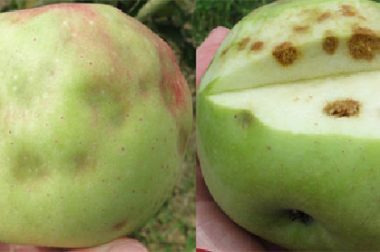




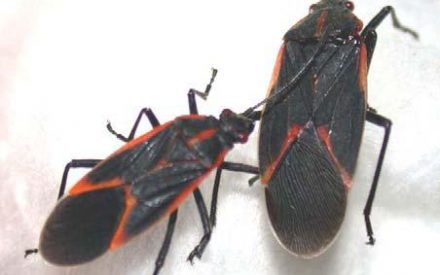 Boxelder Bugs
Boxelder Bugs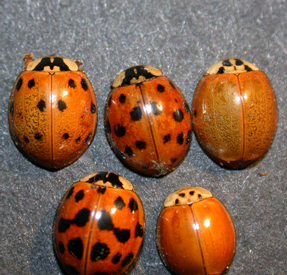 Multicolored Asian Lady Beetle
Multicolored Asian Lady Beetle Protecting Your Tree From Emerald Ash Borer
Protecting Your Tree From Emerald Ash Borer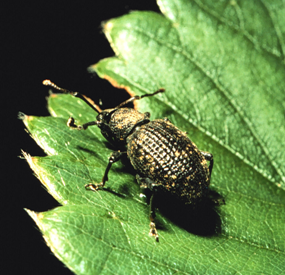 Black Vine Weevil
Black Vine Weevil


